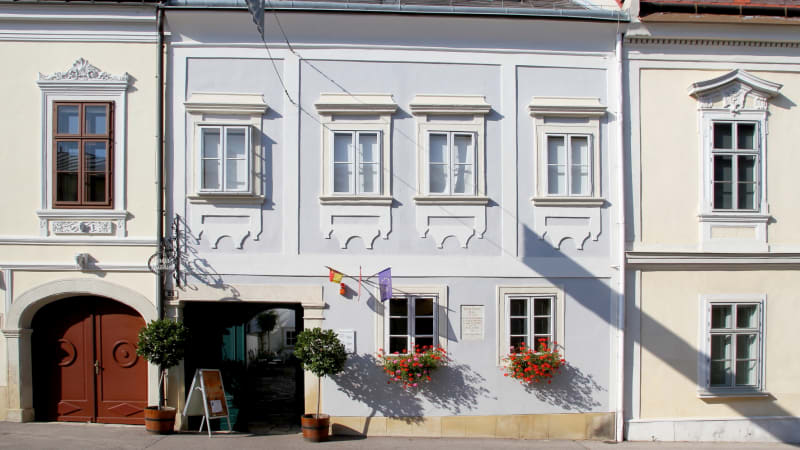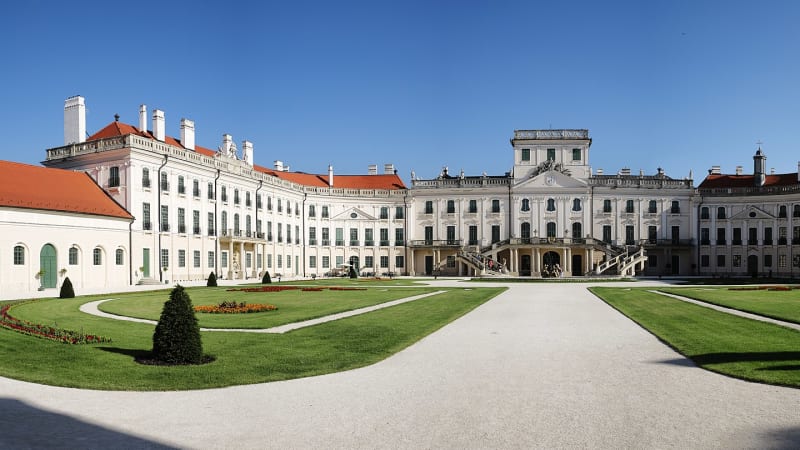Haydn’s Breakthrough
October 30, 2017
"The rules are all my very obedient humble servants." Franz Joseph Haydn
Long before Haydn was the most famous musician in Europe, long before he went to London, long before he had more commission offers than he could fulfill, he was still doing quite well for himself. He was in charge of all musical activities for the Esterházy family, vastly wealthy and powerful members of the Hungarian nobility. Haydn was always very loyal to the Esterházys and with good reason—he was hired at the young age of 29 knowing that he would soon be Kapellmeister, one of the most prestigious musical positions in the German-speaking world. And the family always treated him very well. For instance, when his house burned down in 1768 and again in 1776, they gave him the money to rebuild both times. Though Mozart and Beethoven had serious moral qualms about being treated as a servant (or house officer), Haydn didn’t. He had a great gig and he was generally very happy with it. The biggest drawback was that he couldn’t live in Vienna, being forced to spend most of the year in the far-flung towns where the family had its estates.

Nikolaus Esterházy was a generous patron of the arts and, in addition to the standard musical genres of the time, he had a few uncommon musical pursuits. He played the baryton, a string instrument that was meant to be bowed and plucked at the same time. It was never very popular and disappeared almost completely after his death. Haydn wrote well over 100 works for the instrument. Later, the prince’s interest shifted from instrumental music to Italian comic opera so Haydn composed a number of operas and oversaw the productions of 88 others between the mid-1770s and 1790. And, when the prince built an elaborate marionette theatre, Haydn composed five marionette operas. (This was strange even back then—a mostly positive report from 1773 described the author’s initial skepticism, “you would never expect anything worth being interested in or paying attention to hearing this word ‘marionette.’”) However, despite the prince’s idiosyncrasies, Haydn greatly benefitted from his vast resources and love of music.

Back When the Printing Press was Still a Big Deal…
Haydn, though his first priority was to the Esterházys, was a shrewd businessman. By the late 1770s, his works had been circulating widely around Europe in manuscript copies and unauthorized print versions but no music publisher existed in Austria until 1778, when the publishing house of Artaria expanded from art and maps into music. Probably not coincidentally, Haydn negotiated a new employment contract in that same year that allowed him to publish his works without needing the Esterházys’ permission. With that, a highly lucrative new income source opened for him.
Haydn was eager to make an impression now that he was able to publish his music in earnest. He wanted the first releases to appeal to both amateurs and professionals and drive up demand for his scores. So he wrote the best, most advanced, most interesting, most creative quartets he could. In a letter he said he wrote them in “an entirely new, special way.” And the public responded. The quartets were published in many different editions across Europe, acclaimed by critics, and arranged for many improbable groupings, including flute quartet, solo piano, and string duos. Mozart, in turn, paid him the highest compliment and dedicated six quartets of his own to Haydn.
What’s So New About Them?
“… the [Op. 33] Quartets have the rhythmic technique that comes from the experience of writing comic opera: a rapid action demanded a regularity of phrasing in order to be intelligible, and the music needed a tight continuity articulated logically to keep time with what happened on the stage. What Haydn had learned in ten years, what these new quartets show is, above all, dramatic clarity.” The Classical Style, Charles Rosen
Just as comic opera sets up expectations only to gleefully knock them down, Haydn’s Op. 33 Quartets are tightly organized, logically laid-out creations that surprise at every turn. Haydn was always funny but nearly 10 years after the drama-filled Op. 20 Quartets, the Op. 33 set are shorter, tighter, and lighter. Haydn had truly found his voice. The second of the set, appropriately nicknamed “The Joke,” received its nickname because the last movement’s very predictable first half is followed by an ending that subverts all expectations.
Haydn’s jokes are erudite, clever, and frequently delivered deadpan.
Of course, comic opera—and comic quartets—are about more than jokes. Comic opera was popular for its fast-paced dialogue and general breathless zaniness. In the Op. 33 Quartets Haydn honed his ability to shape the melodic material into small bits to create driving forward motion, surprising pauses, and interesting rhythms, like in the first movement of Op. 33, No. 3 “The Bird”.
Haydn had always joked in his music but the Op. 33 Quartets show a renewed ability to control the musical material that allowed him insert many more expectation-defying moments and little surprises and punches of sound. With his new publication deal, he was also writing for his largest audience yet and he wanted the quartets to sound fresh and fun. Little did he know that his bid to cement his reputation in Europe and finally profit from his widespread popularity would also kick off the Classical style in earnest. At the same time that Haydn was on a push to sell his music, Mozart had just arrived in Vienna, energetic and eager to prove himself. The decade of the 1780s proved to be wildly productive for both composers.
Article by Laura Keller, Editorial Manager





